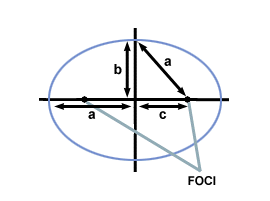Please wait while we process your payment
If you don't see it, please check your spam folder. Sometimes it can end up there.
If you don't see it, please check your spam folder. Sometimes it can end up there.
Please wait while we process your payment
Get instant, ad-free access to our grade-boosting study tools with a 7-day free trial!
Learn more



This site is protected by reCAPTCHA and the Google Privacy Policy and Terms of Service apply.
Create Account
Select Plan
Payment Info
Start 7-Day Free Trial!

Annual
2-49 accounts
$22.49/year + tax
50-99 accounts
$20.99/year + tax
Select Quantity
Price per seat
$29.99 $--.--
Subtotal
$-.--
Want 100 or more? Request a customized plan
You could save over 50%
by choosing an Annual Plan!

SAVE OVER 50%
compared to the monthly price!
| Focused-studying | ||
| PLUS Study Tools | ||
| AP® Test Prep PLUS | ||
| My PLUS Activity | ||
$22.49/month + tax
Save 25%
on 2-49 accounts
$20.99/month + tax
Save 30%
on 50-99 accounts
| Focused-studying | ||
| PLUS Study Tools | ||
| AP® Test Prep PLUS | ||
| My PLUS Activity | ||
No Fear provides access to Shakespeare for students who normally couldn’t (or wouldn’t) read his plays. It’s also a very useful tool when trying to explain Shakespeare’s wordplay!
Erika M.
I tutor high school students in a variety of subjects. Having access to the literature translations helps me to stay informed about the various assignments. Your summaries and translations are invaluable.
Kathy B.
Teaching Shakespeare to today's generation can be challenging. No Fear helps a ton with understanding the crux of the text.
Kay H.
No Fear provides access to Shakespeare for students who normally couldn’t (or wouldn’t) read his plays. It’s also a very useful tool when trying to explain Shakespeare’s wordplay!
Erika M.
I tutor high school students in a variety of subjects. Having access to the literature translations helps me to stay informed about the various assignments. Your summaries and translations are invaluable.
Kathy B.
Teaching Shakespeare to today's generation can be challenging. No Fear helps a ton with understanding the crux of the text.
Kay H.
Create Account
Select Plan
Payment Info
Start 7-Day Free Trial!
You will only be charged after the completion of the 7-day free trial.
If you cancel your account before the free trial is over, you will not be charged.
You will only be charged after the completion of the 7-day free trial. If you cancel your account before the free trial is over, you will not be charged.
Order Summary
Annual
7-day Free Trial
SparkNotes PLUS
$29.99 / year
Annual
Quantity
51
PLUS Group Discount
$29.99 $29.99 / seat
Tax
$0.00
SPARK25
-$1.25
25% Off
Total billed on Nov 7, 2024 after 7-day free trail
$29.99
Total billed
$0.00
Due Today
$0.00
Promo code
This is not a valid promo code
Card Details
By placing your order you agree to our terms of service and privacy policy.
By saving your payment information you allow SparkNotes to charge you for future payments in accordance with their terms.
Powered by stripe
Legal
Google pay.......



Please wait while we process your payment

Sorry, you must enter a valid email address
By entering an email, you agree to our privacy policy.
Please wait while we process your payment

Sorry, you must enter a valid email address
By entering an email, you agree to our privacy policy.
Please wait while we process your payment

Your PLUS subscription has expired
Please wait while we process your payment
Please wait while we process your payment

Kepler's First Law
To understand Kepler's First Law completely it is necessary to introduce
some of the mathematics of ellipses. In standard form the equation for an
ellipse is:
\begin{equation}
\frac{x^2}{a^2} + \frac{y^2}{b^2} = 1 \end{equation}
where $a$ and $b$ are the semimajor and semiminor axes respectively. This is
illustrated in the figure below:

The foci of an ellipse both lie along its major axis and are equally spaced around the center of the ellipse. In fact, the foci are both distance $c$ from the center of the ellipse where $c$ is given by $c = \sqrt{a^2 - b^2}$. As shown in , each foci is placed such that semiminor axis (of length $b$), part of the semimajor axis (of length $c$) form a right-angled triangle of hypotenuse length $a$, the semimajor axis.
The eccentricity of an ellipse, can then be defined as: \begin{equation} \epsilon = \sqrt{1 - \frac{b^2}{a^2}} \end{equation} For a circle (which is a special case of an ellipse), $a=b$ and thus $\epsilon = 0$. The eccentricity is a measure of how "elongated," or stretched out an ellipse is.
We can now state Kepler's First Law clearly:
Planets orbit the sun in ellipses with the sun at one focus.This statement means that if a point $P$ represents the position of a planet on an ellipse, then the distance from this point to the sun (which is at one focus) plus the distance from $P$ to this other focus remains constant as the planet moves around the ellipse. This is a special property of ellipses, and is illustrated clearly in . In this case $d_1 + d_2 = l_1 + l_2 = $ a constant as the planet moves around the sun.

As marked on the figure, the closest point that the planet comes to the sun is known as the aphelion and the farthest point that the planet moves from the sun is called the perihelion.
Please wait while we process your payment





